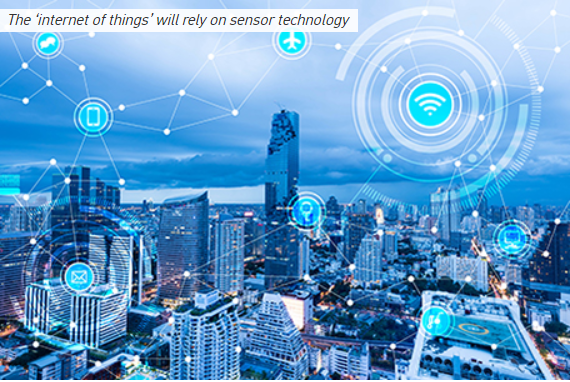Sensory Perception with Platinum
Posted:
Platinum-based sensors have widespread applications, improving our personal safety, enhancing the functionality of equipment and processes, as well as paving the way for future technologies

Stable and corrosion resistant, with excellent conductivity, platinum is well-suited as a sensor component, often in ‘mission-critical’ situations that call for reliability and efficiency.
For example, platinum is used widely in airbags, which have been standard vehicle-safety devices since the late 1990s. It is estimated that the introduction of airbags has reduced the risk of fatal injury in a head-on collision by 30 per cent.
In the event of a collision, the aim of an airbag is to slow a passenger’s forward motion, evenly and rapidly. Critical to this is the airbag’s deployment, which is triggered by an initiator sensor that releases the bag within one twenty-fifth of a second of impact, at a speed of 200 miles per hour. This initiator sensor uses a fine platinum wire coated with an agent that causes the bag to inflate.
Further, the automotive industry uses platinum in ‘lambda’ or exhaust gas oxygen sensors as part of the engine control system in vehicles with an autocatalyst. These sensors contain a platinum tip that monitors oxygen levels in exhaust gases, providing feedback that allows the air to fuel ratio to be optimized.
Similarly, it is used in sensors that help to control the level of nitrogen oxides in exhaust emissions – with modern engines now fitted with more sensors per car in order to meet tighter emissions control requirements.
Detecting, protecting and connecting
Platinum-based sensors are also used in carbon monoxide detectors. Often fatal, carbon monoxide poisoning is referred to as ‘a silent killer’ as it is a colorless, odorless gas that gives rise to symptoms that can be difficult to spot.
Carbon monoxide poisoning occurs most frequently in a domestic setting due to faulty combustion heating and cooking appliances, where the carbon-containing fuel source does not burn fully, due to insufficient air being available. A carbon monoxide detector uses platinum electrodes to create a circuit. When carbon monoxide is present, the flow of electrical current increases, triggering a warning alarm.
Biosensors – including breathalyzers used to measure blood alcohol content and blood glucose monitors used by diabetics – also incorporate platinum-based components, as do many medical devices, such as that used to analyze blood gases.
Platinum’s stability at high temperatures and its high melting point of c.1,769°C make it well suited as a sensor component in temperature-monitoring devices like thermocouples and resistance thermometers, which are used in numerous industrial applications.
Future demand for sensors is set to grow significantly over the mid-term, driven by nascent technology that will see networks of sensors communicating with each other through the ‘internet of things’ – a concept that envisages a highly-evolved level of connectivity between humans and their environment.
Posted with permission of World Platinum Investment Council. As of March 19, 2019.


